 MyDogBreeds
MyDogBreeds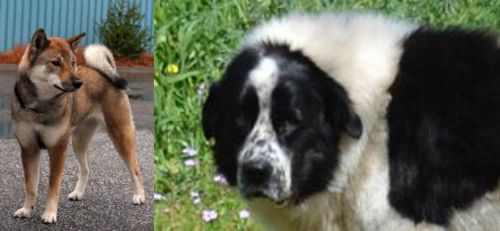 Shikoku is originated from Japan but Greek Sheepdog is originated from Greece. Shikoku may grow 48 cm / 18 inches shorter than Greek Sheepdog. Both Shikoku and Greek Sheepdog are having almost same weight. Shikoku may live 3 years more than Greek Sheepdog. Both Shikoku and Greek Sheepdog has same litter size. Both Shikoku and Greek Sheepdog requires Moderate maintenance.
Shikoku is originated from Japan but Greek Sheepdog is originated from Greece. Shikoku may grow 48 cm / 18 inches shorter than Greek Sheepdog. Both Shikoku and Greek Sheepdog are having almost same weight. Shikoku may live 3 years more than Greek Sheepdog. Both Shikoku and Greek Sheepdog has same litter size. Both Shikoku and Greek Sheepdog requires Moderate maintenance.
 The Shikoku is from the Shikoku Island in Japan and they are very much like the Japanese Shiba Inu. There are six native Japanese dog breeds and the Shikoku is medium sized and sits in between the smaller Shiba Inu and the very large Akita Inu. All of the Japanese native breeds are members of the Spitz family. The Japanese have sorted their six breeds into 3 categories by size. Being medium size, the Shikoku is a member of the Shika-inus group. Others in this group are the Ainu Ken, the Kai Ken and the Kishu Inu. There are small differences between the three dogs in the Shika-inus group.
The Shikoku is from the Shikoku Island in Japan and they are very much like the Japanese Shiba Inu. There are six native Japanese dog breeds and the Shikoku is medium sized and sits in between the smaller Shiba Inu and the very large Akita Inu. All of the Japanese native breeds are members of the Spitz family. The Japanese have sorted their six breeds into 3 categories by size. Being medium size, the Shikoku is a member of the Shika-inus group. Others in this group are the Ainu Ken, the Kai Ken and the Kishu Inu. There are small differences between the three dogs in the Shika-inus group.
The Shikoku was bred to be a hunting dog in Kochi Prefecture to hunt boar and deer. Other names for the breed include Kochi-ken and Kishu dog or boar hound. This dog is considered to be the purest of the Japanese native dogs or Nihoken. They are today very , very rare. There are very few outsides of Japan, but some in North America are attempting to save the breed.
The are od Kochi Prefecture is a mountainous region with rough terrain that anyone outside of the area would have a hard time accessing. That is why the Shikoku is considered to be so pure as they were pretty well isolated in the mountains. The breeders were also isolated by the mountains and there was very little interbreeding. Although breeding the same dog, these different groups developed different lines of the Shikoku.
Documentation tells us that the number of originals lines was just two and these were the Western and Eastern Shikoku. The Western dog was known as the Mount Ishizuchi Shikoku and the Eastern as the Mount Tsurugi Shikoku. Within these two lines of Shikoku there are additional strains.
Within the Eastern line there is the Tokushima (lya) and the Koci-Aki strains. Within the Western line there is the Hata Uwahara, the Ehime-ken Shuso-gun and the Honkawa. Among these lines and strains, there are different coats and different colors; some heavier and some taller, but all figure into the development of the breed.
Finally, in the Showa Era the Japanese established the Dog Protective League and they began collecting the native dogs from around the country. They protected them so that the breed will go on. The Shikoku is today recognized as Foundation Stock by the AKC and it is fully recognized by the Japan Kennel Club, the Canadian Hound Club and the Shikoku has been declared a living Japanese “natural monument”.
Two bloodlines became the way the Shikoku were know after the war – the Honkawa and the Hata lines The Honkawa line were the descendants of the Choshun-go and the Hata line were the descendants of the Matsukaze-go. They bred the lines separately until 1955, when they mixed them to make the breed stronger. They are no longer considered separate in any way.
Because they are such primitive dogs, the Shikoku are good watch dogs and quite reserved with strangers. They need a lot of socialization to be a family pet but once they are, they make great companions. Intelligent, quick to learn and eager to please. Of the two lines of Shikoku dogs from the Western strains, the current Shikoku owes much of its current development to the Honkawa and Hata strains.
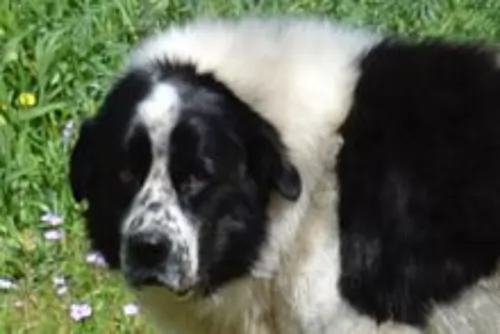 Known as the Olympus Dog or even simply as the Greek Shepherd, the Greek Sheepdog is a large to giant molosser dog from Greece. His purpose has always been to guard flocks and livestock from predators and he has been around for hundreds of years, looking much like the Great Pyrenees.
Known as the Olympus Dog or even simply as the Greek Shepherd, the Greek Sheepdog is a large to giant molosser dog from Greece. His purpose has always been to guard flocks and livestock from predators and he has been around for hundreds of years, looking much like the Great Pyrenees.
It is believed that the dog was likely bred with a number of breeds – both local and non-local dogs.
Unfortunately there were no records kept of the development of the breed but today the Greek Sheepdog remains a rare and fairly unknown breed outside of Greece.
It's numbers are dwindling in Greece too and since 1998 the Greek ARCTUROS has made attempts to save the breed, starting the Greek Shepherd Dog Breeding Program.
 Today’s Shikoku is a medium sized breed with a Spitz like body – square with a head that is wedge shaped. The ears are pointed, and the tail is curved and feathered. They have arched toes and hard pads with dark, hard nails.
Today’s Shikoku is a medium sized breed with a Spitz like body – square with a head that is wedge shaped. The ears are pointed, and the tail is curved and feathered. They have arched toes and hard pads with dark, hard nails.
The two lines of the Shikoku are slightly different in built and look. The Honkawa strain is slender and athletic; agile and single coated. They have dark eyes and most of them are black and tan.
On the other hand, the Hata strain is much heavier boned, with the front more muscular than the rear. They have small ears, a wide skull and a strong undercoat. His eyes are shaped differently than the Honkawa. Their coats are also mostly red and tan.
 The Greek Sheepdog is a large dog, standing at 65 – 75cm and weighing roughly between 32 to 50kg. He is a dog that displays physical strength. He has a large head with brown eyes and a serious expression on his face. He has a thick double coat which is essentially white with red, black or brown markings.
The Greek Sheepdog is a large dog, standing at 65 – 75cm and weighing roughly between 32 to 50kg. He is a dog that displays physical strength. He has a large head with brown eyes and a serious expression on his face. He has a thick double coat which is essentially white with red, black or brown markings.
You will also see tri-color dogs. He has floppy ears today but there was a time when the right ear of the male dog was cut off or cropped. The tail is long and bushy and it can be held low but also held up so that it curls over the back.
Maybe because of his size and him being a strong-willed, independent thinker, the Greek Shepherd may not be the best choice for a first time dog owner. Having said that, if you're a strong, firm, patient, kind person, then you'll be able to raise any kind of dog, first time or not.
The Greek Shepherd is a brave, loyal, calm, protective dog and with socialization and training, can make an awesome pet. They are dogs who are a bit suspicious with strangers, not making friends too easily. He loves his human family and wants to be part of their activities. He can't be left on his own day after day as this can lead to excessive barking and destructive behavior.
They've been dogs used to working with livestock and they will certainly need to be taken on daily walks and involved in rough and tumble games as they thrive on activity. The dog won't fit easily into city life where there is just a handkerchief-sized garden as he needs space and activity.
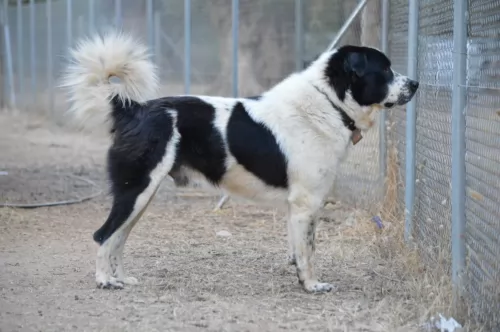 Your Greek Shepherd is an intelligent, independent dog who likes to show his loyalty and devotion to his owner.
Your Greek Shepherd is an intelligent, independent dog who likes to show his loyalty and devotion to his owner.
He is a protective dog too and when trained and socialized makes an excellent family pet. These Molosser type dogs are formidable dogs known for their bravery and courage.
They're the type of dogs who like a strong leader-type of owner and when he gets someone who he can look up to as his leader, he becomes a loyal, devoted pet.
 Being isolated as they were, the Shikoku was a fairly healthy breed, no genetic testing has been done. Despite this they suffer a few of the same potential issues as other breeds their size.
Being isolated as they were, the Shikoku was a fairly healthy breed, no genetic testing has been done. Despite this they suffer a few of the same potential issues as other breeds their size.
Otherwise this is an agile and hardy breed with no known congenital health issues.
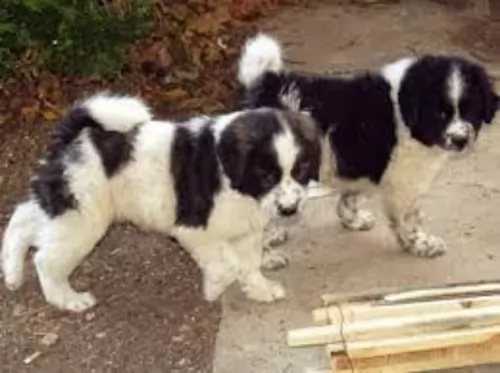 With good care and lots of love, this dog can live to be between 10 to 12 years of age. He is unlikely to get sick very often, but still it it wise to know of some of the health issues than can occur with large breed dogs like this.
With good care and lots of love, this dog can live to be between 10 to 12 years of age. He is unlikely to get sick very often, but still it it wise to know of some of the health issues than can occur with large breed dogs like this.
This is a disease of the heart muscle. The heart is enlarged and unable to have the right heart rhythm. The distended muscle isn't able to push the blood through the heart chambers to where it is needed. Cause for this dilated heart can be genetic, nutritional, infectious or metabolic.
Because taurine and carnitine are involved in good heart function, and low levels of these amino acids can cause symptoms of dilated cardiomyopathy, supplementation is useful, especially if you feel your dog isn't getting in the right kind of food.
Borreliosis, a bacterial infection, causes Lyme disease, transmitted by the Ixodes tick. The tick bites the dog and the toxins gets into the dog's bloodstream, with the bacteria travelling to different parts of the body.
Typical symptoms in a dog includes loss of appetite, fever, no energy, swelling of joints and lameness, but symptoms can progress to kidney failure too or cardiac problems. Treatment will include antibiotics.
 Feeding the puppy Be careful with feeding the puppy and adult as the breed is known to have a tendency toward obesity. Fresh food is better as it is what the breed has been used to, but a high quality puppy kibble is acceptable. Feed three times per day.
Feeding the puppy Be careful with feeding the puppy and adult as the breed is known to have a tendency toward obesity. Fresh food is better as it is what the breed has been used to, but a high quality puppy kibble is acceptable. Feed three times per day.
2.Feeding the adult He is a high energy dog so feed a high energy food designed for a medium sized dog. Feed in two meals each day.
4. Games and Exercises You will need a fenced yard for this breed and time to play with them. If not, you would need time to walk her more than once a day. They love to play indoors as well, chasing balls, learning new things. The breed make great companions for hiking, swimming, play frisbee or catch outside. They do well at agility, rally, obedience and flyball.
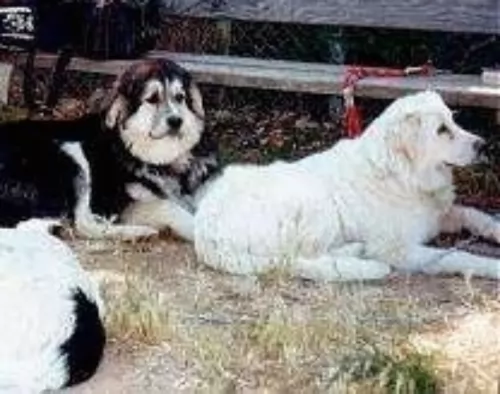 The coat of the Greek Shepherd is fairly long so it will need to be brushed at least twice a week to keep it free from matting and tangling. He is an average shedder and the brushing will remove all loose hairs, keeping the coat sleek and shiny.
The coat of the Greek Shepherd is fairly long so it will need to be brushed at least twice a week to keep it free from matting and tangling. He is an average shedder and the brushing will remove all loose hairs, keeping the coat sleek and shiny.
Feeding your Greek Sheepdog requires giving him top quality food as this will ensure he is healthy and can ward off common dog illnesses. If you're going to be feeding him kibble, make sure to go for the top quality brands, and as a treat for your pet you can add in some brown rice, pasta, brown bread, cooked chicken and vegetables.
Dogs are essentially carnivores and he will need to have some raw meat such as beef added into his kibble from time to time. He should never ever be without a constant supply of fresh, cool water.